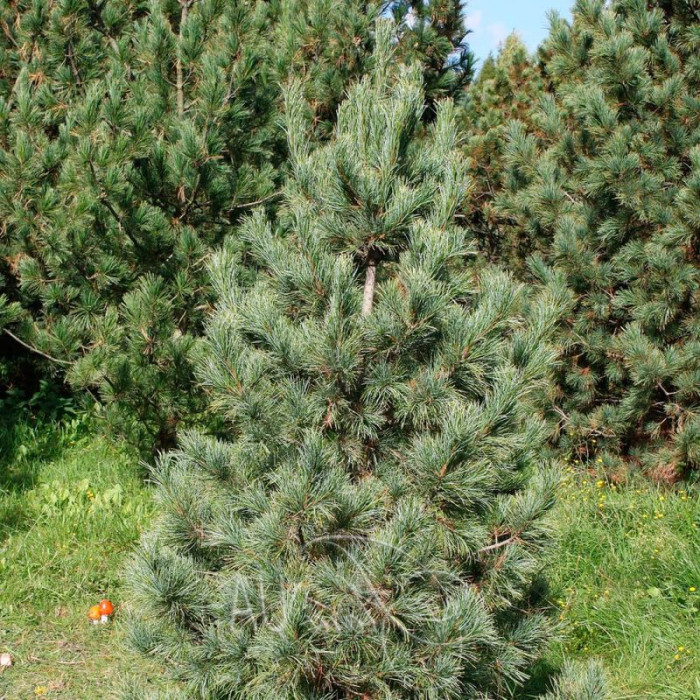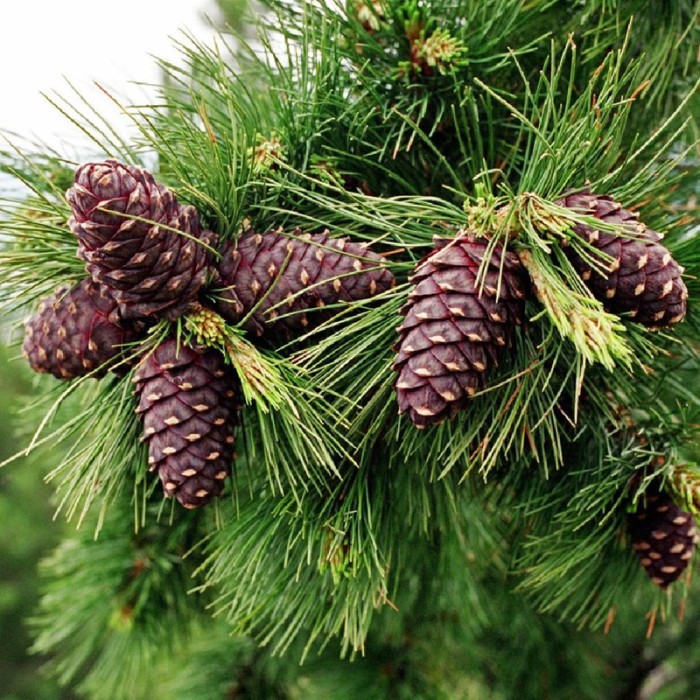Siberian cedar, or Siberian cedar pine / Pinus sibirica - one of the species of the genus Pine; evergreen tree, reaching 35-44 m in height and 2 m in trunk diameter. Life expectancy is about 500 years.
The Siberian cedar is distinguished by a dense, often multi-topped crown with thick branches. The trunk is brown-gray, in old trees it forms a fissured scaly bark. Branching is whorled. Shoots of the last year are brown, covered with long red hairs.
The needles are dark green with a bluish bloom, 6-14 centimeters long, soft, triangular in section, slightly serrated, grows in bunches, five needles in a bunch.
The root system consists of a short tap root, from which lateral roots extend. The latter end in small root hairs, at the ends of which mycorrhiza develops. On well-drained, especially light-textured soils with a short taproot (up to 40-50 centimeters), the tree develops powerful anchor roots that penetrate to a depth of 2-3 meters. Anchor roots together with basal paws provide stability to the trunk and crown.
The growing season is very short (40-45 days a year). For this reason, it is classified as a slow-growing breed. Another consequence is a straight, even trunk. The tree belongs to the shade-tolerant species.
Siberian cedar is a monoecious, dioecious plant, that is, male and female cones are located on the same tree. The plant is anemophilous: pollination occurs with the help of wind. Male cones (microstrobils) are collected at the base of the shoot (growth of the current year), female (megastrobils) are formed at the ends of growth shoots, when the latter finish their growth, near the apical bud. Buds conical, gradually tapering, 6-10 mm long, not resinous; renal scales are long and gradually pointed, lanceolate. Anther strobili on their axis bear microsporophylls, larger at the base than at the top. Covering scales are placed on the axis of female cones. In their sinuses are seed scales with two ovules. The seed scales at the base of the cones are also larger than at the top.
Mature cones are large, elongated, egg-shaped, first purple and then brown, 5-8 centimeters wide, up to 13 centimeters long; their scales are dense, appressed, on the surface covered with short stiff hairs. Scutes thickened, broadly diamond-shaped, large, up to 2 cm wide with a small white navel. Cones mature within 14-15 months. Each cone contains from 30 to 150 seeds - pine nuts. Seeds are large, 10-14 mm long and 6-10 mm wide, obliquely obovate, dark brown, without wings. From one tree you can get up to 12 kilograms of "nuts" per season.

No questions about this product, be the first and ask your question.










